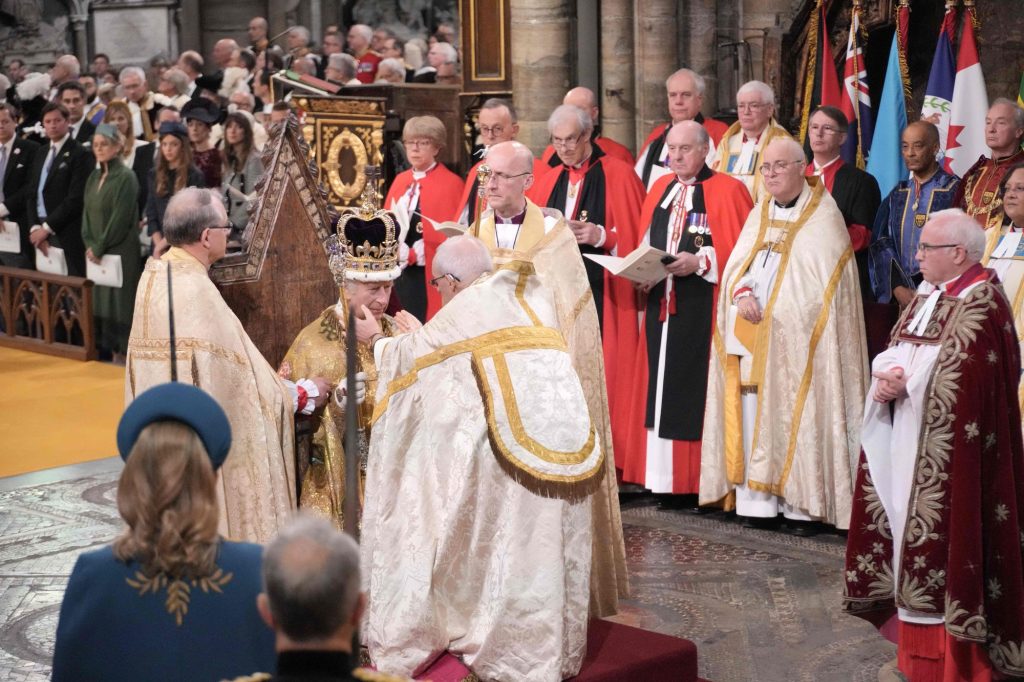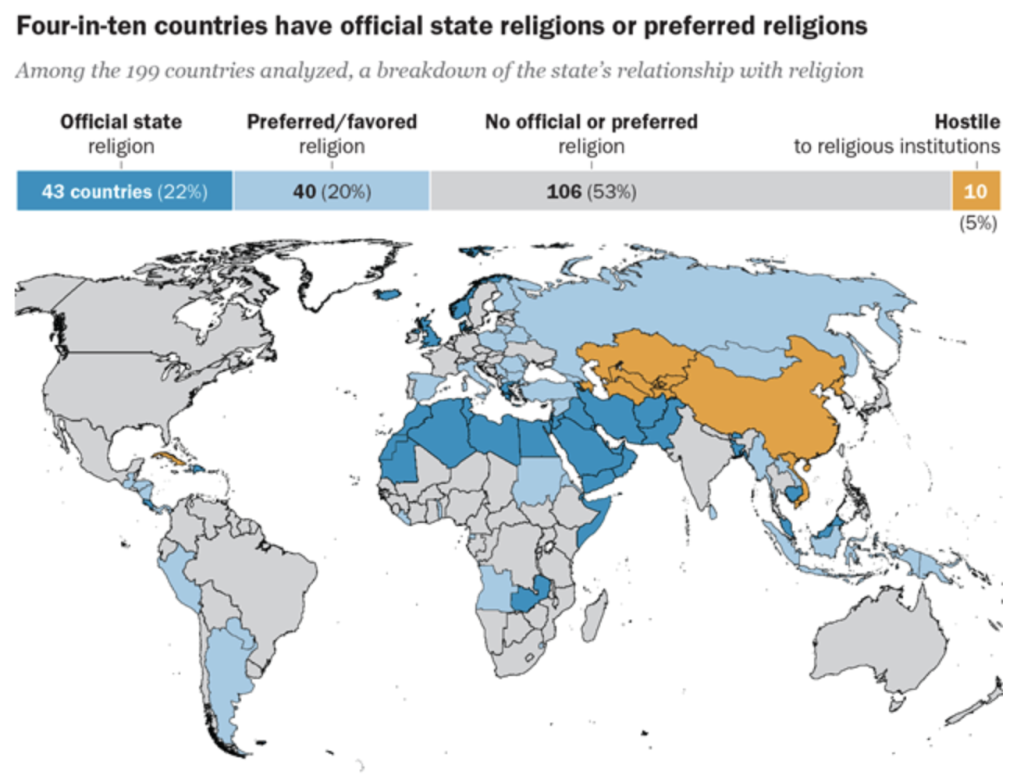This year is the first time I had tutorials with multiple students from religious backgrounds other than my own – mostly Muslim – who are developing projects around their religious identity or for their Muslim community. At first I felt pushed into the deep end, not really sure or confident on how to navigate those tutorials when it comes to feedback. Several resources, some of which we were presented with for this blogging task, helped me forge a path through the unknown.
In Kwame Anthony Appiah’s Reith lecture on Creed (2016) is the first time I hear about the political philosopher’s life and background. As the child of a Ghanaian barrister and British art historian he grew up between two worlds, making the most of each culture. He narrates how his parents built a world for him that embraced the best of both cultures. He then goes on, talking about the interpretation and re-interpretation of fundamental religious texts and how they must be read with the cultural and societal norms at the time they were written in mind and how it merits an interpretation for the times we live in. Also just recently I listened to another podcast where the biochemistry researcher and professor Renée Schröder (2022) urges the listeners to re-consider the story of Noah’s Arc, for example, as a story of genocide. She points out that many Christians, at least in modern-day Austria where she is based, probably never have read the Bible or if so, never considered it critically.
I grew up in Austria myself, baptised Catholic I now consider myself maybe agnostic or at least mildly interested in pagan traditions, folklore and spiritual practices. In school, however, I went through 12 years of religious education. Rather than talking about religion as a subject it was very much Catholicism that we were taught. We were indeed asked to read the Bible, first the old, then the new testament. Unfortunately there was no room for critical analysis or discussion in class, something that might have fundamentally altered my interest in religion. Later on I was asked to read the old testament again, namely when I was enrolled for the first term of studying art history (a subject I unfortunately never graduated from), which offered me a more interesting look at the Bible, it’s symbolism and example of non-verbal communication and meaning-making. There might be some time and place during my tutorials with Muslim students to invite them to critically analyse and consider the Qu’ran or other religious texts they include in their bibliographies.
In stimulus papers by Tariq Modood and Craic Calhoun (2015) on religion in Britain the two Professors and educators discuss the important topic of how public institutions, such as universities in the UK, in secular states are still hugely influenced by the public religion of the state. The recent crowning of Charles III raised so many questions for me, coming from a country without a monarchy (but not without a strong presence of Christianity). Why is he being crowned at Westminster Abbey? Why does it all look like a very religious ceremony? It is all more akin the inauguration of a new Pope than the head of a state.

I know that monarchy in the UK is not really meant to be involved in politics, but it is most certainly political. The aforementioned papers discuss what challenges public religions bring higher education in terms of minority identities and matters of care that are necessary to embrace multiculturalism. Even though the papers specifically talk about Britain, but as a study by the Pew Research Centre (2017) shows, 40% of countries have official state religions or preferred religions and might face similar concerns.

There are many headlines in the “Higher Power: Religion, Faith, Spirituality & Belief” reader by Shades of Noir (n.d.). I might read it all, as it ties in with another project I’m working on at the moment, about spirituality. For the context of this blog I will zoom in on one, Surah Yusuf by Sahar Amer. It allows me to glimpse into the Qu’ran – a text I never read before but that has been cited it some of my students’ work. I did not know that surah is a story-chapter in the Qu’ran with hidden morals. I enjoy how the story of Yusuf is embellished with symbolisms and refers to traditions of dream interpretation. It also elicits many historical references, such as slave trade and social hierarchies in ancient Egypt.
Bibliography
Amer, S. (n.d.) Surah Yusuf. In Higher Power: Religion, Faith, Spirituality & Belief. London: Shades of Noir.
Appiah, K.A. (2016) Creed. [The Reith Lectures]. 22 October 2016.
Calhoun, C. (2015) Religion, the public sphere and higher education. In Religion in Britain: Challenges for Higher Education. London: Leadership Foundation for Higher Education.
Modood, T. (2015) ‘We don’t do God’? the changing nature of public religion. In Religion in Britain: Challenges for Higher Education. London: Leadership Foundation for Higher Education.
Pew Research Centre (2017) Many Countries Favor Specific Religions, Officially or Unofficially. Available at: https://www.pewresearch.org/religion/2017/10/03/many-countries-favor-specific-religions-officially-or-unofficially/#fn-28865-1 (Accessed: 13 June 2023)
Schröder, R. (2022) Von Kräutern, Hexen und den Bestandteilen des Lebens. [Bauer to the People]. 23 October 2022.
3 responses to “Inclusive Practices: Faith”
Dear Anna, thank you for your insightful blog, we share a similar religious upbringing and education. The crowning of Charles III resembling a religious event makes sense for me, especially in relation to your aforementioned schooling. The close association or ordination by God provides immunity, just as your experiences of having ‘no room for critical analysis or discussion’, replicating this model shuts down any critical analysis or debate. Allowing for strange uses of the word highness and majesty without hesitation. Good luck with your students, I’d be fascinated to hear of their critical investigations of their selected religious texts, even to the faithful this shouldn’t be viewed as heretical, writings have been constantly reviewed, edited or withdrawn through time.
Dear Anna, thank you for your insightful blog, we share a similar religious upbringing and education. The crowning of Charles III resembling a religious event makes sense for me, especially in relation to your aforementioned schooling. The close association or ordination by God provides immunity, just as your experiences of having ‘no room for critical analysis or discussion’, replicating this model shuts down any critical analysis or debate. Allowing for strange uses of the words ‘highness’ and ‘majesty’ without hesitation for hereditary dynasty without any hint of controversy.
Good luck with your students, I’d be fascinated to hear of their critical investigations of their selected religious texts, even to the faithful this shouldn’t be viewed as heretical, writings have been constantly reviewed, edited or withdrawn through time.
Thank you for your comment, Donald!